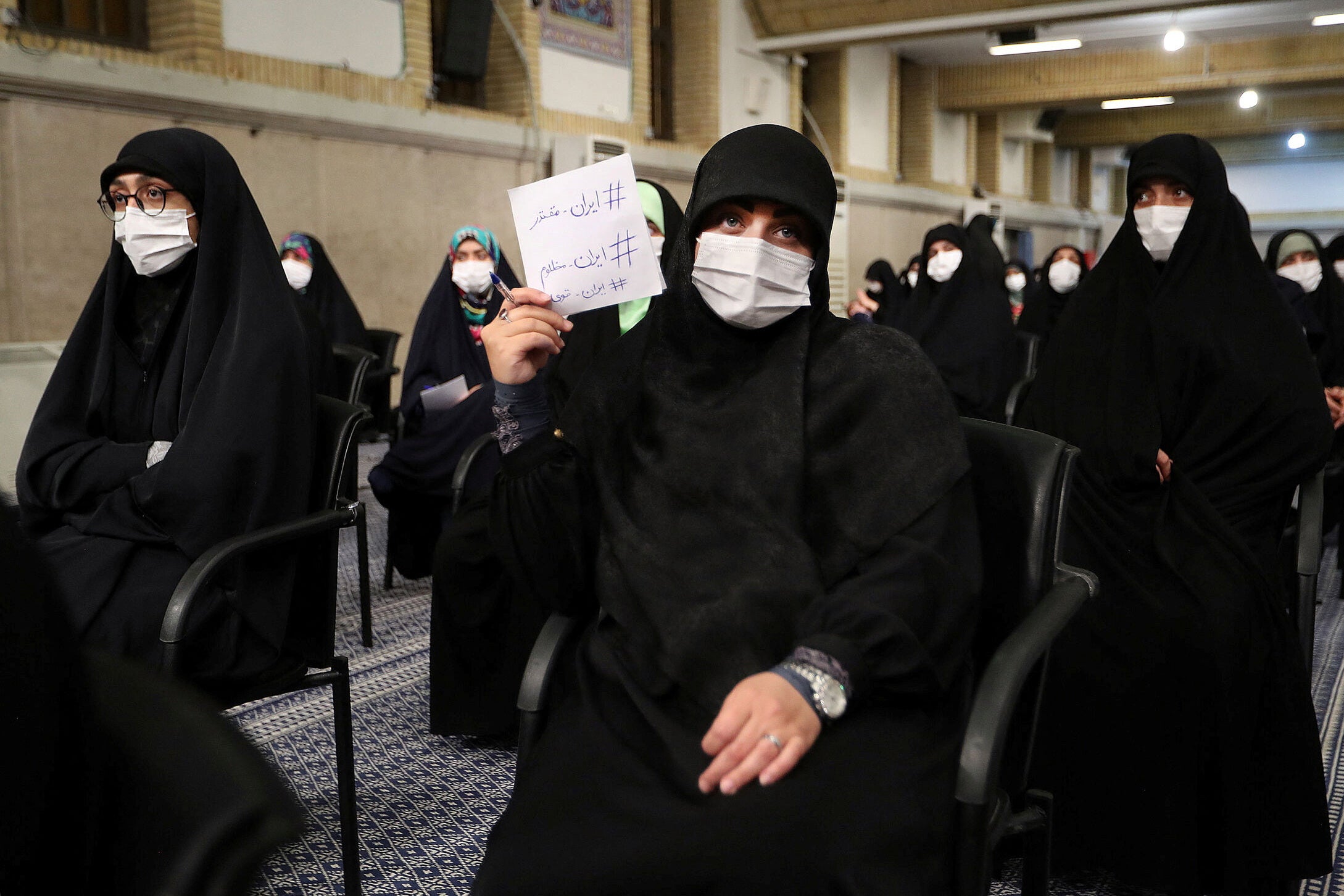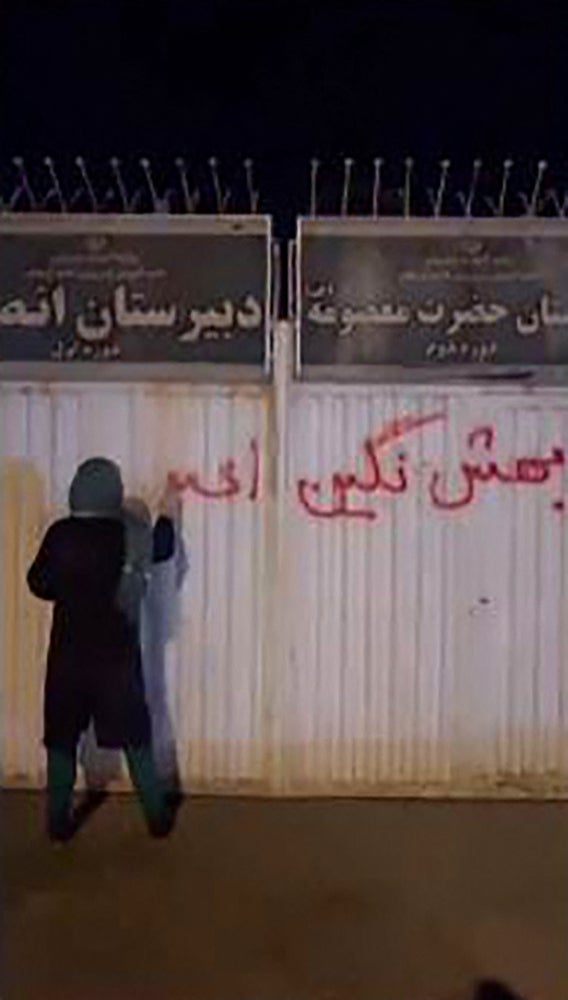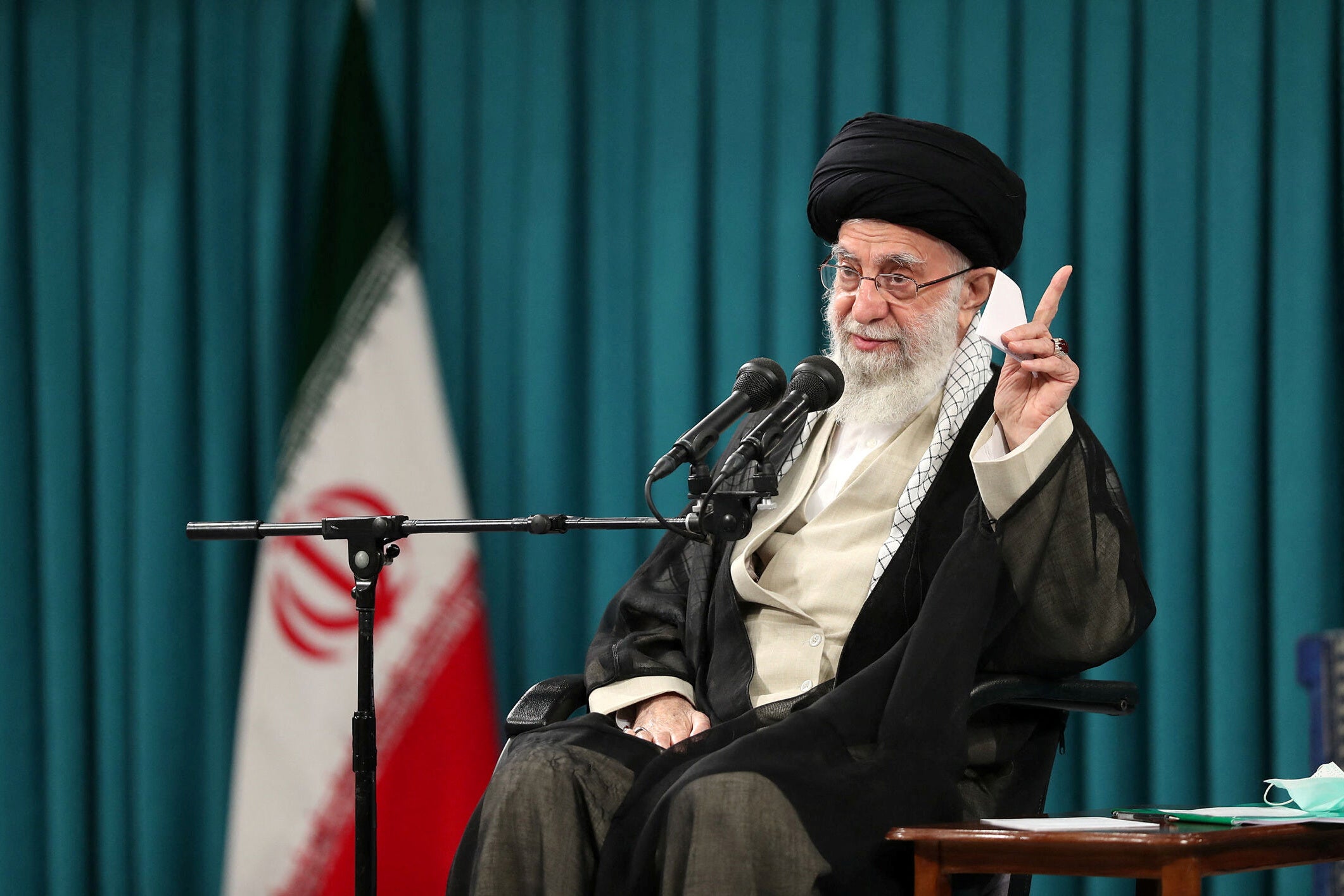‘How do we defend this?’: Pious conservatives speak out against Iran regime
In chatrooms and in interviews, those who previously backed Tehran’s rulers are speaking out with disgust and anger

Your support helps us to tell the story
From reproductive rights to climate change to Big Tech, The Independent is on the ground when the story is developing. Whether it's investigating the financials of Elon Musk's pro-Trump PAC or producing our latest documentary, 'The A Word', which shines a light on the American women fighting for reproductive rights, we know how important it is to parse out the facts from the messaging.
At such a critical moment in US history, we need reporters on the ground. Your donation allows us to keep sending journalists to speak to both sides of the story.
The Independent is trusted by Americans across the entire political spectrum. And unlike many other quality news outlets, we choose not to lock Americans out of our reporting and analysis with paywalls. We believe quality journalism should be available to everyone, paid for by those who can afford it.
Your support makes all the difference.He has spent the last 25 years of his life in devotion to Islam and the values of the Islamic Republic of Iran. He is a member of a “hayat”, one of the network of neighbourhood religious committees that organises regular mourning ceremonies to commemorate Imam Hossein, the grandson of the prophet Muhammad and a key figure in Iran’s majority Shia faith.
But over the last five weeks he has had a crisis of conscience watching Iran unravel in the wake of the death of 22-year-old Mahsa Amini after her arrest by the morality police and the subsequent waves of protest.
“Oppression is oppression, whether America does it, Israel does it, or the Islamic Republic does it,” Vahid Khoramian, an Iranian engineer and social media personality, said during a recent public discussion on Twitter, as thousands tuned in. “And what I have learned in the ‘hayat’ over the last 25 years is to stand against oppression, not with the oppressor.”
A significant bulk of Iran’s religious conservatives and hardliners are standing by the regime. But the death of Amini and the government’s handling of it and its aftermath has prompted significant dissent within the conservative camp. Few if any senior officials have endorsed the protests, like some did during Iran’s 2009 uprising. But some have publicly questioned enforcement of the mandatory hijab law that prompted Amini’s arrest and the ire of Iranian women.
Beyond the political elite, there has been even more dissent and disgust. “The conservative guys are saying that these people, with their actions, they’ve humiliated us as well,” says Khoramian, who said he had spoken with dozens of “hayat” members since the uprising. “They say, ‘how do we defend this?’”
Others spoke of a rare unity that has formed that crisscrosses not only genders and ethnic groups, but also cultural and political divides.
“Everyone says you can’t be with this crackdown. Even the religious people have this opinion,” Amir, a political science student who hails from a conservative family, says in a phone interview. “They have criticism of the government and the way things are going forward.”
Gauging the attitudes of Iranian conservatives and erstwhile regime supporters is crucial to determining the possible outcome of the wave of protests. Most popular uprisings lead to fundamental political change in authoritarian states only after factions of the elite and bases of their longtime supporters turn against the regime.
Several indicators suggest the Iranian regime’s popular base of support has been declining for years. Voter turnout in the last two rounds of national elections has diminished drastically. Several rounds of protests since large 2017 have been led by the pious small-town poor and working classes, long considered pillars of the establishment.
Defections among the conservative intelligentsia who are now angry at the regime would mark an even greater blow to the country’s supreme leader Ali Khamenei, who has long seen himself as a cerebral patron of the arts and sciences.

“When you see a woman in all-covering chador and a woman without a hijab protesting in the street together, the role of morality [police] is over,” says Alireza Mostofi, the host of a popular chatroom that brings together Iranians from various political stripes, including pious conservatives and reformists inside the country, and regime opponents based abroad. “But they fear that if they reform this they have to dismantle everything else and the whole thing will collapse.”
Political discussions among conservative Iranians drifting away from the regime tend to be far different than those encountered among Iranians abroad. They use religious arguments and cite the Islamic Republic’s own laws to show the hypocrisy of the regime.
In one recent discussion on Twitter, participants debated a story about Imam Ali, Imam Hossein’s father and a cousin of the prophet Muhammad. Imam Ali, says one speaker repeatedly complied with majority demands—unlike the regime.
In another chat, someone mentioned that many Iranians inside the country were facing “limitations” in what they could do or say. Another retorted by recounting the story of Imam Hossein’s heroic but tragic battle against usurpers to the Islamic caliphate on the plains of southern Iraq, in what is called the Battle of Ashura, a moment that marks one of the most important events in the Shia faith.
“In Karbala during Ashura many were also facing limitations,” he says.

Other times they bemoan how the current crisis is affecting conservative values like family and faith.
“This girl spent 20 years in front of your television and she wasn’t guided,” says Mr Khoramian. “And you’re going to do it in 15 minutes? You cannot make someone religious in 15 minutes, but in 10 seconds you can make someone completely disillusioned with God, and the prophet and religion.”
One journalist bemoaned that the children who should be immersed in play and studies were dodging bullets and learning the finer points of making molotov cocktails. “A whole generation of young people, even children, are growing up immersed in political discourse and see protesting as a part of their childhood,” he says.
“What you are describing, this is death,” responded another listener. “This is the death of Iran.”
Among those speaking out are families of the martyrs of the Iran-Iraq war, wounded survivors of the conflict and their conservative families.
“They’re asking whether this is any way to run a country,” Seyed Hassan Aghamiri, an Iranian cleric who was defrocked by the regime several years ago, says in an online forum. “People are under economic pressure, they are under psychological pressure. And they keep adding to it.”
He blasted the heavy-handed regime’s violence. “You hit schoolgirls!” he says. “I mean, how much of an idiot can you be? You shoot teargas into schools. You keep talking about the law. What do you do that is in compliance with the law? Are plainclothes officers part of the law?”
Even previously non-political figures who were seen as national icons have joined in condemning the regime. They include football stars Ali Karimi and Ali Daei, who have both spoken out about alleged regime atrocities.
A whole generation of young people, even children, are growing up immersed in political discourse and see protesting as a part of their childhood
“They have left no possible way for one to defend them,” says Aghamiri. “The government’s behaviour is such that one can’t even stay silent.”
Iran’s regime continues to persist in calling the protests a foreign conspiracy cooked up or at least fanned by international satellite channels funded by Tehran’s enemies and foreign governments. Some Iranian conservatives are joining in to mock such explanations.
“They keep talking about America and Israel,” says Khoramian. “Did America and Israel say go get this girl? It’s not even clear what they did to her. Did they say don’t apologise? Did Saudi Arabia say to do that? Did America? Did Israel say don’t blame anyone? Don’t fire a single person? That not a single person resign? Was that also America?”
State-controlled news outlets often adopt a triumphant tone, downplaying the protests and mocking the opposition, delight at infighting among the fractious exiles. But analysts also detect deep worries within conservative circles. Without any formal announcement, the morality police, the so-called “guidance” patrol units involved in the abduction and death in custody of Amini have been rolled back.
Many suspect the regime’s strategy is to create such chaos on the streets and up the level of violence to such an extent as to scare most protesters off the streets, and then eventually both bring back both morality police and to build up the edifice of fear and terror that keeps Iranians who despise the regime from engaging in civil disobedience.
Protests in recent days, though continuing, appeared smaller in size, a sign the regime will take that its repression is yielding results.

Those who know the hardliners mindset are generally pessimistic about whether the protests will lead to political change, and in conversations and public forums they cautioned not to underestimate the power and ruthlessness of the regime.
“Whenever I think about them, I get a feeling of hopelessness,” says Amir, the university student. “They have a force of 4 million to 8 million people and this crowd is a permanent force. And the regime will never make this population unhappy. The regime relies on these people. When there’s war or threat they are always behind the regime. And they will die and kill for the regime.”



Join our commenting forum
Join thought-provoking conversations, follow other Independent readers and see their replies
Comments